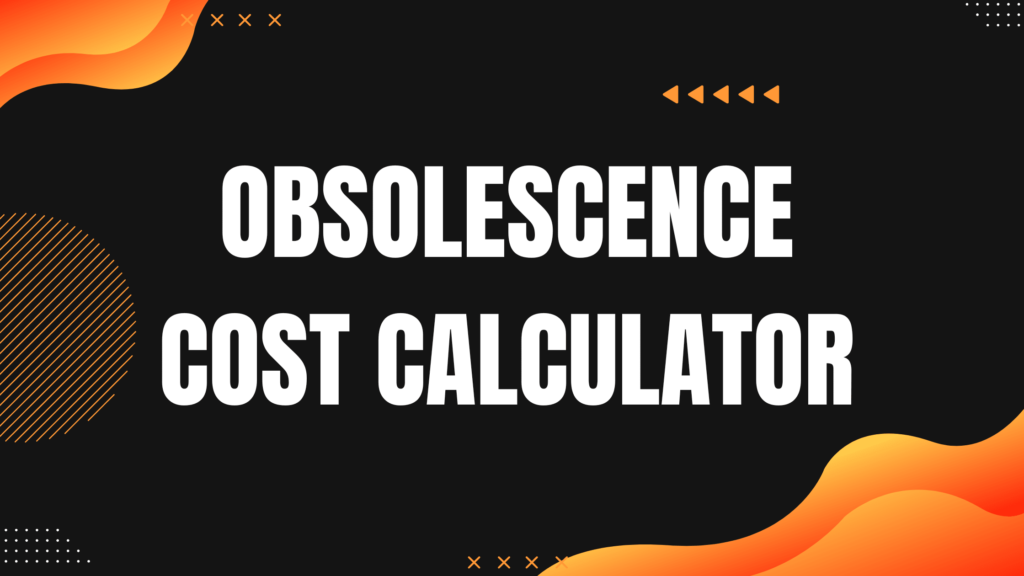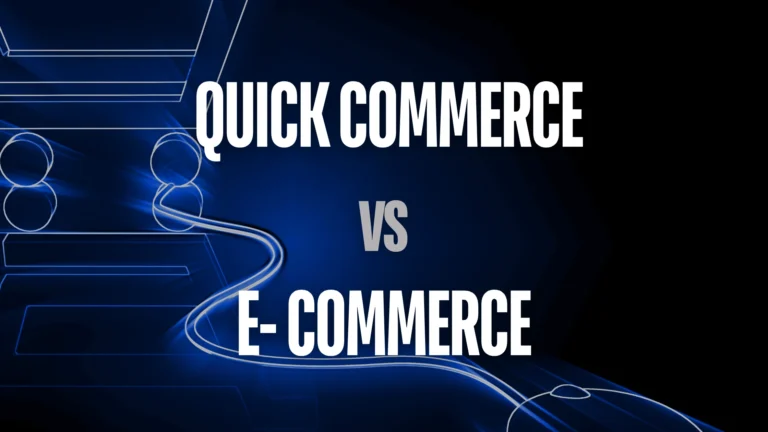Excess inventory is one of the most common — and costly — challenges in supply chain management. What starts as “just in case” stock often Excess inventory is one of the most common — and costly — challenges in supply chain management. What begins as “just in case” stock often turns into slow-moving items that tie up cash, raise storage costs, and risk becoming obsolete.

The result? Hidden losses that eat into margins, disrupt cash flow, and force painful write-offs.
That’s where the Obsolescence Cost Calculator comes in. This free, interactive tool helps you quickly spot:
- Excess stock sitting idle in your warehouse
- Expected write-off costs if demand doesn’t pick up
- ROI-neutral discount levels that make clearance sales worthwhile
It also runs an FSN (Fast–Slow–Nonmoving) classification, giving you a clear view of which SKUs are healthy — and which are quietly draining working capital.
👉 With just a few inputs, you’ll go from guessing about inventory risk to making data-backed decisions that protect your bottom line.
What Is Obsolescence Cost?
Obsolescence cost measures the financial loss a business incurs when products lose market value and cannot sell at their original price. In other words, it represents the hidden cost of inventory that becomes outdated, slow-moving, or unsellable.
This typically happens due to:
- Over-purchasing beyond realistic demand
- Declining sales or slower market adoption
- Seasonal products that expire after peak demand
- Short product life cycles — common in electronics, fashion, or fast-changing consumer goods
For supply chain leaders, obsolescence cost isn’t just a paper loss — it creates real challenges such as:
- Cash flow strain: working capital gets tied up in idle stock
- Higher carrying costs: more warehouse space, handling, and insurance
👉 (Tools like our Cycle Stock Calculator help you see how much stock is truly needed) - Reduced profitability: products are eventually sold at steep discounts or written off entirely
Real-World Example
Imagine a retailer stocks 1,000 winter jackets at $80 each. Demand slows, and only 600 units sell at full price during the season. The remaining 400 units sit unsold.
- Carrying those jackets for another year ties up $32,000 in cash.
- If fashion trends shift, the retailer may need to discount them by 50%, recovering only $16,000.
- That leaves a $16,000 obsolescence cost — capital that could have funded faster-moving products.
Table Snapshot:
| Item | Units | Unit Cost | Total Value | Sold at Full Price | Leftover Units | Discount Applied | Recovered Value | Obsolescence Cost |
|---|---|---|---|---|---|---|---|---|
| Winter Jacket (L) | 1,000 | $80 | $80,000 | 600 | 400 | 50% | $16,000 | $16,000 |
Key Insight: The retailer tied up $80,000 in stock, but due to slow demand, $16,000 turned into an obsolescence cost.
👉 With a calculator, they could decide sooner whether to discount, hold, or liquidate stock — instead of waiting until losses mount.
How to Use the Obsolescence Cost Calculator
We designed this tool so that anyone can use it without confusion. Just follow these steps:
Step 1: Choose Your Input Mode
- Select Single SKU Mode if you want to test one product.
- Select Bulk Data Mode if you have many SKUs to check at once.
Tip: Download our template CSV so you know exactly which headers to use.
Step 2: Enter Your Inputs
- On Hand → Enter how many units you currently have in stock.
- Unit Cost → Add the purchase or production cost per unit.
- Monthly Demand → Enter the average number of units you sell each month.
- Planning Horizon (Months) → Decide how far ahead you want to check (e.g., 6 months).
- Risk % → Estimate the chance of write-offs (for example, 20% means one in five excess units may not sell).
Step 3: Run the Calculation
Click Run Analysis and the tool will instantly show:
- Excess Quantity
- Expected Write-Off Quantity
- Excess Value
- Expected Write-Off Cost
- Coverage Months
- ROI-Neutral Discount
Step 4: Read the Insights
The tool doesn’t just show numbers. It also writes simple interpretations in plain language. For example:
- “Winter Jacket L has over 2 years of excess stock, risking a ₹1.1L write-off unless discounted.”
- “Baby Wipes 72pcs are balanced, with only 3 months’ coverage.”
This way, even if you’re not a supply chain expert, you’ll know what action to take.
Step 5: Save or Share Your Results
- Download the full results as a CSV.
- Copy them into Excel or an email.
- Try the Load Sample Data button to see how the calculator works before entering your own numbers.
Why This Matters
Inventory obsolescence isn’t just a background risk — it’s a silent profit killer. Studies show that 1–3% of annual revenue is lost because of unsold or outdated stock. For businesses operating on thin margins, that’s often the line between breaking even and falling into losses.
The impact goes beyond write-offs:
- Cash flow suffers because money stays locked in idle products.
- Carrying costs climb as warehouses fill up with slow movers.
- Growth stalls since capital that could fuel expansion gets trapped in unsellable inventory.
By using the Obsolescence Cost Calculator, you can spot these risks early, run “what-if” scenarios, and act before stock turns into dead weight. The result? Protected margins, lower carrying costs, and more working capital to reinvest where it matters most.
Related News Reads: Retailers forced to write-off inventory due to obsolescence, cut sourcing periods






